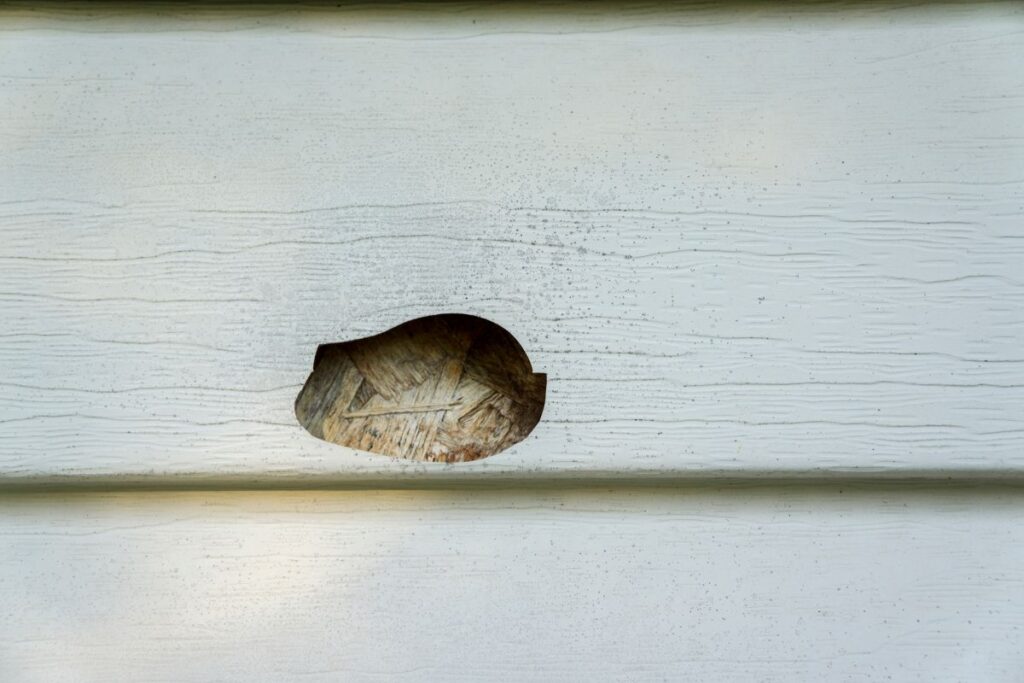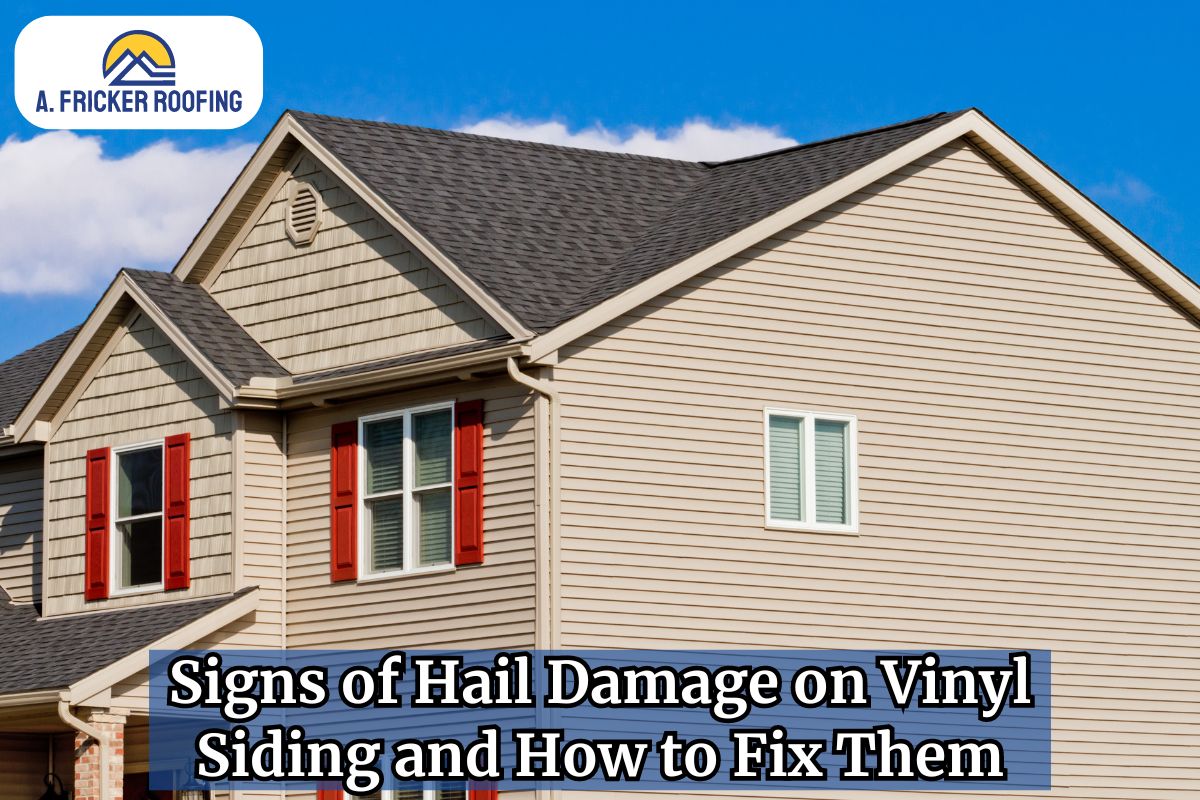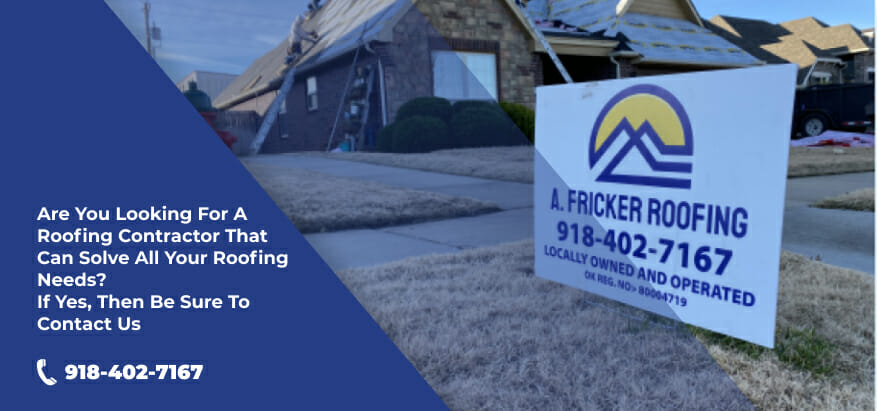If you are wondering whether your vinyl siding is hail-damaged, start with an inspection to look for dents, cracks, and gaps. This blog post will address the most common signs of hail-damaged vinyl siding and provide a complete repair guide. Continue reading through the end for expert-recommended preventive tips.
Is Vinyl Siding Hail Resistant?
Vinyl siding is durable and can protect your home walls against winds (≈ 110 mph) and water penetration. However, certain weather conditions can exceed the siding’s durability, causing it to crack, dent, and chip. Hail storms are one of them.
Regardless of the intensity and the size of the hail, vinyl siding can bear damage that can be both visible and hidden. Cracks and splits can usually be seen from a certain distance, while dents and dings may not be. The larger the hail in diameter, the more severe damage is expected. Therefore, it is important to thoroughly inspect your vinyl siding after a storm. In the next section, we will discuss the most common signs of hail damage on vinyl siding.
Common Signs of Hail Damage On Vinyl Siding
First things first: what does hail damage look like on vinyl siding? Compared to roof damage, which can be tricky to spot, hail damage on your siding is often more visible. However, it can still be easy to miss if you don’t know what you’re looking for.
1. Dents and Dings
When inspecting your vinyl siding for storm damage, look for dents and dings as these are the most obvious signs. Hailstones can leave behind noticeable dents on the surface of your siding. While they might seem minor, these dents can compromise your vinyl siding’s integrity over time. Moreover, dents can collect water, leading to potential mold and mildew growth, which can further degrade the siding material.
2. Cracks and Splits

Vinyl siding can crack and split when hit by sizeable hailstones. Cracking and splitting of vinyl siding is a more severe concern as it exposes the underlying layers to moisture and other elements. Moreover, these cracks and splits can expand over time under temperature extremes, making your home walls vulnerable to water penetration, which is another big problem that can lead to internal damage such as rot and mold.
3. Chips and Holes

Sometimes, hailstones can be large and forceful enough to chip off pieces of the vinyl or even create small holes. These can lead to significant issues if not addressed promptly. Holes in the siding can allow insects and pests to enter, creating another set of problems that could require pest control services in addition to siding repair.
4. Discoloration
Sometimes, the impact of hail can cause the color of your siding to fade or change in spots. This isn’t just a cosmetic issue, it indicates that the protective layer of the siding has been compromised. Discoloration can be a sign that the siding’s UV protection has been damaged, leading to further degradation of the material and reducing its lifespan.
Also Read: 3 Easy Ways To Restore Faded Vinyl Siding
Step-by-Step Guide to Repair Hail Damage To Vinyl Siding
So, you’ve identified hail damage—what’s next? The good news is that repairing hail damage on vinyl siding isn’t as daunting as it may seem. With some simple steps, you can restore your siding to its former state.
1. Assess the Size of the Damage
Start by thoroughly inspecting your siding. Walk around your home and look for all the damaged areas. Pay attention to both minor and major signs of damage. In case you plan to file an insurance claim, document the damage with photos and videos. This detailed inspection will help you understand the full extent of the repairs needed.
2. Gather the Required Materials
If the hail damage on vinyl siding is minor and limited to a small area, you’ll need some basic tools like a hammer, a pry bar, a utility knife, and replacement vinyl siding panels. Make sure to select siding that matches your existing panels in color and texture to ensure a seamless repair. However, if the damage is sizeable and extends to a greater area, you might need to consult a professional for siding repair.
3. Remove the Damaged Siding Using a Ply Bar
Using your pry bar, carefully remove the damaged siding panels. Be gentle to avoid causing further damage to the surrounding panels. Start by loosening the nails or fasteners while holding the panel in place, then gently pull it away from the wall. Take care not to damage the waterproof barrier beneath the siding.
4. Cut and Install Replacement Panels
Measure the damaged section and cut a replacement panel to fit. Install the new panel by snapping it into place and securing it with nails. Make sure the new panel aligns perfectly with the existing siding. It’s crucial to nail the panel at the right intervals to ensure it remains secure but still allows for natural expansion and contraction due to temperature changes.
5. Seal and Paint Your Vinyl siding (If Needed)
If your siding is painted, you might need to touch up the paint around the repaired area. Use a high-quality exterior paint that matches your existing siding. Proper sealing and painting not only improve the appearance but also provide an additional layer of protection against future damage.
If the damage is extended to a large portion, you can also consider replacing your vinyl siding. To choose the right vinyl siding brand, read: Which Vinyl Siding Brands Make The Cut?
How to Prevent Future Hail Damage To Vinyl Siding
While you can’t control the weather, there are steps you can take to minimize the risk of hail damage to your vinyl siding in the future.
1. Invest in High-Quality Siding: Not all vinyl siding is created equal. Consider upgrading to a more durable option that’s specifically designed to withstand severe weather conditions like hail storms.
Related: 5 Best Hail-Resistant Siding Options for Your Home
2. Install Protective Measures: Some homeowners opt to install hail guards or screens on vulnerable areas of their siding. These can help deflect hailstones and reduce their impact.
3. Regular Maintenance: Keep your siding in top shape by performing regular maintenance. Clean it periodically, check for any signs of wear and tear, and address minor issues before they become major problems.
Final Thoughts
By inspecting your vinyl siding for signs of damage, acting quickly to make repairs, and taking preventive measures, you can protect your siding and keep your home looking its best. And remember, if you’re ever in doubt about the extent of the damage or the best way to fix it, don’t hesitate to consult a professional.
Contact The Experts In Tulsa, OK, For Your Siding Repair
A. Fricker Roofing and Waterproofing is a leading roofing and home exterior company dealing with all home exterior projects. Our expertise in home renovation projects includes siding repair and replacement, gutter installation, and window replacement. Contact us today at (918) 402-7167 to consult one of our professionals.

